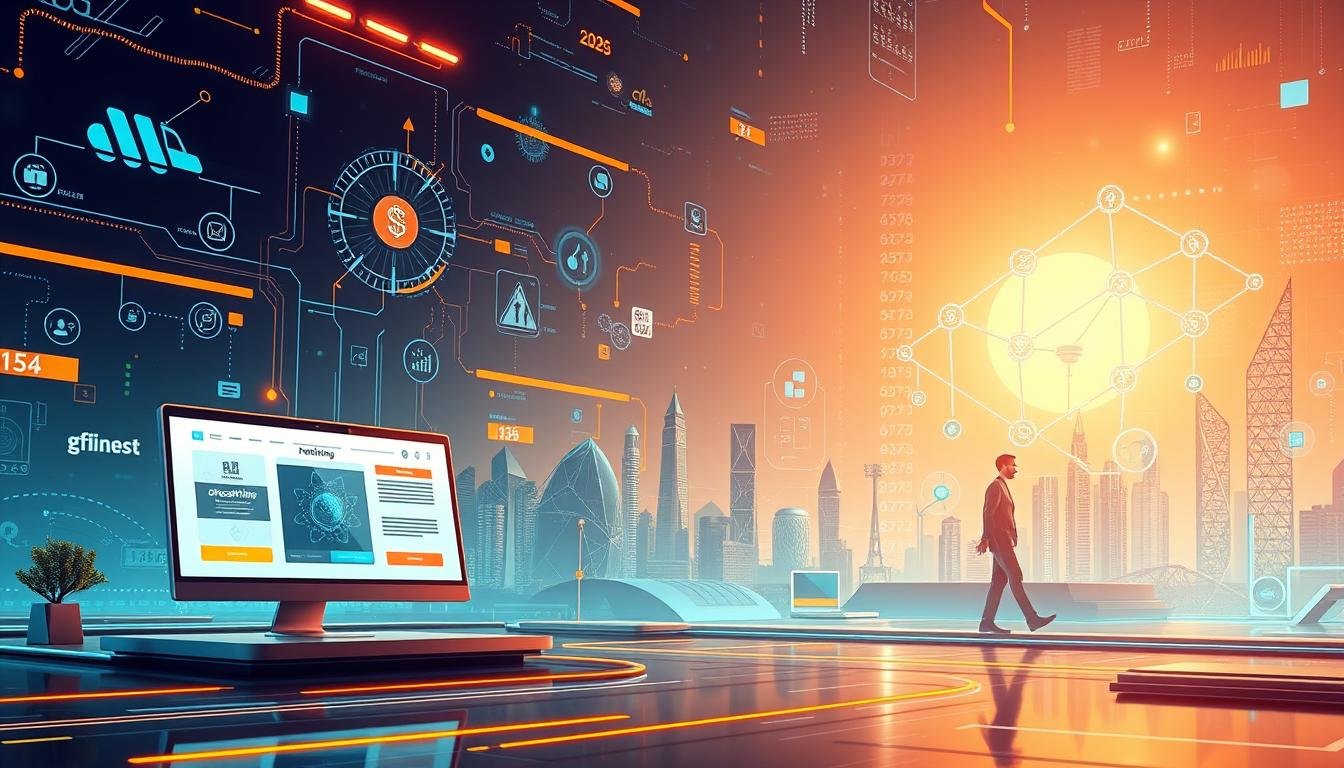Top Trends Shaping Employee Experience (EX) in 2025 and Beyond
Employee Experience (EX) is becoming a top priority for businesses aiming to attract and retain top talent in an increasingly competitive market. Just as globalization reshaped international business, a strong focus on EX is now transforming the workplace. Leading companies like Google and Salesforce are investing heavily in EX strategies that foster well-being, innovation, and loyalty.
In 2025 and beyond, enhancing the employee experience is not just about perks or remote work—it’s about building a workplace culture that values purpose, growth, and connection. From digital transformation to mental health support, the trends shaping EX reflect broader societal shifts and business priorities.
Understanding Employee Experience: A Comprehensive Overview
Employee Experience covers every interaction a person has with their employer—from recruitment to retirement. It’s the sum of how employees perceive their role, the organization, and their future within it.
Defining the Core of EX in the Modern Workplace
Today’s workplace is more than a physical space. It’s a hybrid environment where culture, communication, and digital systems play key roles. EX includes emotional, technological, and physical experiences. From onboarding to offboarding, each phase of the employee journey must be intentional and meaningful.
Organizations now design experiences much like customer journeys—focusing on empathy, personalization, and impact. A positive EX results in higher engagement, productivity, and retention.
Evolution of Employee Experience in the Workplace
- Industrial Era (1800s–1900s): Work was task-based, and experience was not a strategic focus.
- Post-War Period (1950s–1980s): Job security and benefits defined the experience.
- Digital Revolution (1990s–2010s): Technology enabled flexibility and changed expectations.
- Post-Pandemic Shift (2020s): Hybrid work, mental health, and belonging took center stage.
In 2025, we see the EX evolution continue with AI, inclusion, and purpose-driven cultures becoming central to success.
Key Drivers Transforming the Employee Experience Landscape
Several forces are shaping how companies craft experiences for their people. These drivers go beyond HR—they reflect broader societal and technological shifts.
Technological Advancements in the Employee Lifecycle
Digital tools are redefining how employees interact with work. From AI-powered onboarding to predictive analytics for performance, technology makes EX more personalized and scalable.
- AI chatbots provide 24/7 support for HR queries.
- Virtual reality is used for immersive training experiences.
- Data analytics identifies burnout risks before they escalate.
Companies like Microsoft use AI to suggest focus times and learning paths based on employee behavior, making work more efficient and meaningful.
Shift in Workforce Expectations and Generational Influence
Younger generations, especially Gen Z, expect purpose, flexibility, and continuous learning. They value ethical practices, mental health resources, and diverse leadership.
- 79% of Gen Z employees say alignment with company values is critical.
- Flexible work hours and mental health days are now baseline expectations.
EX strategies must now consider not just job satisfaction but life satisfaction.
The Hybrid Work Revolution
The pandemic normalized remote and hybrid work, and it’s here to stay. In 2025, the best EX strategies balance autonomy with connection.
- Asynchronous collaboration platforms like Notion and Loom help distributed teams work efficiently.
- In-office redesigns now focus on creativity, socializing, and collaboration—not just desks.
The future is flexible, but companies must invest in remote onboarding, digital engagement, and equity in hybrid setups.
Economic and Organizational Benefits of Enhanced EX
Improving Employee Experience isn’t just about making people happy—it drives measurable business results.
Boosted Productivity and Innovation
A positive EX directly correlates with better performance. Engaged employees are 21% more productive, according to Gallup.
- Companies with high EX scores see faster innovation and time-to-market.
- Psychological safety fosters idea-sharing and experimentation.
Teams at Google’s “Project Aristotle” found that psychological safety was the most important factor for high performance.
Talent Attraction and Retention
In a tight labor market, a great EX can be your biggest competitive edge.
- Companies with strong EX have 40% lower turnover.
- 70% of job seekers consider a company’s culture before applying.
Employees stay where they feel seen, heard, and supported.
Cost Efficiencies and Reduced Absenteeism
Unhappy employees cost businesses billions. High EX reduces sick days and lowers healthcare costs.
- Well-being initiatives reduce absenteeism by up to 25%.
- Internal mobility supported by personalized learning reduces hiring costs.
Challenges and Criticisms in Implementing Employee Experience Strategies
Despite its importance, implementing EX effectively comes with hurdles.
Data Privacy and Employee Trust
Using AI and data to improve EX can backfire if not handled transparently. Employees worry about being tracked or micromanaged.
- Transparency and consent are key to building trust in EX systems.
- Companies must communicate how data improves—not monitors—work life.
Overreliance on Perks Without Culture
Free lunches and nap pods can’t replace genuine inclusion, growth opportunities, and meaningful work.
- Superficial EX efforts can feel like manipulation, especially if core issues go unaddressed.
- Real impact comes from purpose-driven leadership and open communication.
Burnout and “Always-On” Culture
Remote work blurred boundaries. Without thoughtful policies, flexibility can turn into 24/7 availability.
- Companies must protect downtime with “no meeting” days and mandatory breaks.
- Encouraging disconnection is essential for long-term engagement.
Building Resilient and Adaptive Employee Experience Models
EX in 2025 requires more than reactive policies. It needs proactive, flexible strategies that evolve with employees’ lives.
Personalization Through People Analytics
EX is no longer one-size-fits-all. People analytics tools help HR teams understand diverse needs.
- Pulse surveys, sentiment analysis, and engagement heat maps offer real-time feedback.
- Tailored career paths and benefits meet individuals where they are.
Firms like Adobe use AI to recommend development programs based on role, skill gaps, and career goals.
Leadership Development and Culture of Empathy
The role of managers is shifting. EX leaders must foster empathy, active listening, and inclusive practices.
- Emotional intelligence training is now part of leadership development.
- Managers are being evaluated on team well-being, not just output.
Empathy isn’t a soft skill—it’s a business strategy.
DEI (Diversity, Equity, and Inclusion) as a Cornerstone
Diverse teams outperform homogeneous ones, but inclusion is the real challenge. DEI efforts must be embedded into EX—not bolted on.
- Inclusive hiring, mentorship programs, and pay equity audits are becoming EX essentials.
- ERGs (Employee Resource Groups) give employees a voice and strengthen belonging.
Digital Tools Revolutionizing the Employee Experience
Digital transformation is the backbone of modern EX strategies.
AI and Automation in HR Functions
AI helps streamline workflows, improve support, and enable scalability.
- Chatbots for onboarding, payroll, and leave requests.
- AI-driven insights for succession planning and team dynamics.
Automation frees HR to focus on strategy rather than admin tasks.
Collaboration Tools That Build Connection
Connection is critical for EX, especially in hybrid teams.
- Platforms like Slack, Miro, and Zoom keep teams aligned and engaged.
- Virtual team-building activities and digital coffee chats create culture online.
Learning and Development Platforms
EX means supporting career growth.
- Personalized learning paths on platforms like Coursera or Udemy help employees upskill.
- Internal learning academies align development with business goals.
Employees stay longer when they see a future within the organization.
The Future of Employee Experience: Emerging Trends to Watch
EX is continuously evolving. Businesses must stay ahead of future shifts.
Purpose-Driven Workplaces
In 2025, employees seek meaning in their work. Companies are responding by aligning operations with social impact.
- B Corps and ESG initiatives are influencing company reputation.
- Employees want their work to contribute to societal good—not just profit.
Mental Health as a Business Priority
Mental well-being is now central to EX.
- Companies are hiring Chief Wellness Officers.
- Mental health apps, therapy stipends, and mindfulness programs are becoming standard.
Employees thrive where they feel supported both personally and professionally.
EX and ESG (Environmental, Social, Governance) Integration
Employees care about sustainability and ethics.
- Internal sustainability programs improve engagement.
- Transparent reporting on ESG efforts boosts trust.
EX is no longer internal—it shapes your brand in the eyes of the world.
Conclusion: Investing in EX as a Long-Term Strategy
In 2025 and beyond, employee experience isn’t just a nice-to-have—it’s a business imperative. Just like globalization reshaped commerce, EX is redefining work. Companies that invest in their people will unlock loyalty, innovation, and resilience.
To lead in the future of work, businesses must:
- Embrace personalization through analytics.
- Balance technology with empathy.
- Prioritize well-being and inclusion.
- Design EX with long-term purpose, not short-term perks.
Employee Experience is not just about keeping people—it’s about empowering them. The organizations that understand this will be the ones that thrive in a changing world.
FAQ
1. What is Employee Experience (EX)?
EX includes every interaction an employee has with their employer, influencing how they feel, perform, and grow within the company.
2. Why is Employee Experience important in 2025?
EX impacts productivity, retention, innovation, and employer branding—key factors in today’s talent-driven economy.
3. What are some challenges in improving EX?
Challenges include managing data privacy, preventing burnout, and ensuring perks don’t replace deeper cultural issues.
4. How can businesses personalize EX?
Using people analytics, feedback tools, and AI-driven insights helps tailor EX to individual needs and roles.
5. What role does technology play in EX?
Tech enables scalable, responsive, and immersive EX—from onboarding to training and performance management.
6. How is mental health shaping EX strategies?
Companies now offer therapy, wellness apps, and stress management programs to support employees holistically.
7. Can small businesses improve EX too?
Yes! Small companies can create strong EX by fostering community, offering flexible work, and prioritizing purpose and growth.












